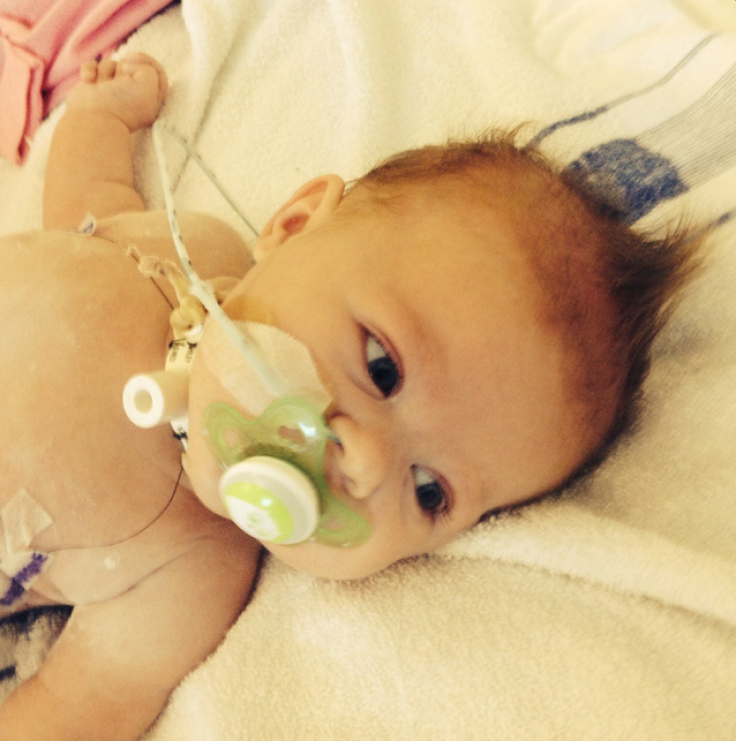Leya Raper, 3-Month-Old Girl With Tracheostomy Tube, May Never Cry Or Speak Due to Vocal Cord Paralysis

During the first year of a child’s life, parents lose about a year of sleep in their lifetime, as babies incessantly cry and coo. But 23-year-old mother Casey Raper of England has not been able to hear her 3-month-old daughter Leya Raper make sounds and gurgle since her first few days of birth. She eventually was left short of oxygen and turned blue. It was not until doctors put a tiny camera in the infant’s throat that Leya was diagnosed with bilateral vocal cord paralysis, leaving her with a tracheostomy tube in her neck until further notice.
This is what I live for!! #leyasjourney pic.twitter.com/degl3FK0lr
— casey (@caseyspeare) June 22, 2014“Having the tracheotomy was our only option. Her episodes were becoming so severe it was the safest thing for her,” Casey said, the Daily Mail reported. “She was able to cry and make noises before but the tracheotomy has been installed below her voice box which means air no longer rushes past her vocal cords when she tries to make a noise.” Leya can produce a few tears, but Casey and her husband, Dan Raper, a 23-year-old self-employed electrician, can only tell if their daughter is crying by looking at her facial expressions, which they describe as “heart wrenching.”
Leya’s vocal cords were unable to move a few months ago, which led to her breathing and swallowing problems. With bilateral vocal cord paralysis, the 3-month-old girl experienced her vocal cords becoming stuck halfway between open and closed, and not moving in any direction. The condition often requires a tracheotomy — an opening made in the neck to provide an airway — says the American Speech-Language-Hearing Association, to protect the airway when the person eats. Leya underwent a successful 90-minute operation, but now the air she breathes bypasses her vocal cords, rendering her unable to make a sound.
The Rapers must now adapt to their daughter’s condition. Casey and Dan are currently staying with their daughter in the hospital as they learn to maintain the device, the tracheostomy tube, which requires changing once a week. The family is also learning sign language so they are able to communicate effectively with Leya in the years to come. “We will be doing everything we possibly can to help her and give her a happy and normal life,” Casey said.
Casey maintains a blog “Leya’s Journey,” to raise awareness of her daughter’s condition by writing posts, and posting photos of Leya’s progress, along with a Facebook page with the same name. Leya’s fundraising page can be found here, and supporters can use the Twitter hashtag: #leyasjourney.
Raising awareness for my little girls rare condition #leyasjourney pic.twitter.com/h6jZc2xcZr
— casey (@caseyspeare) June 22, 2014


























